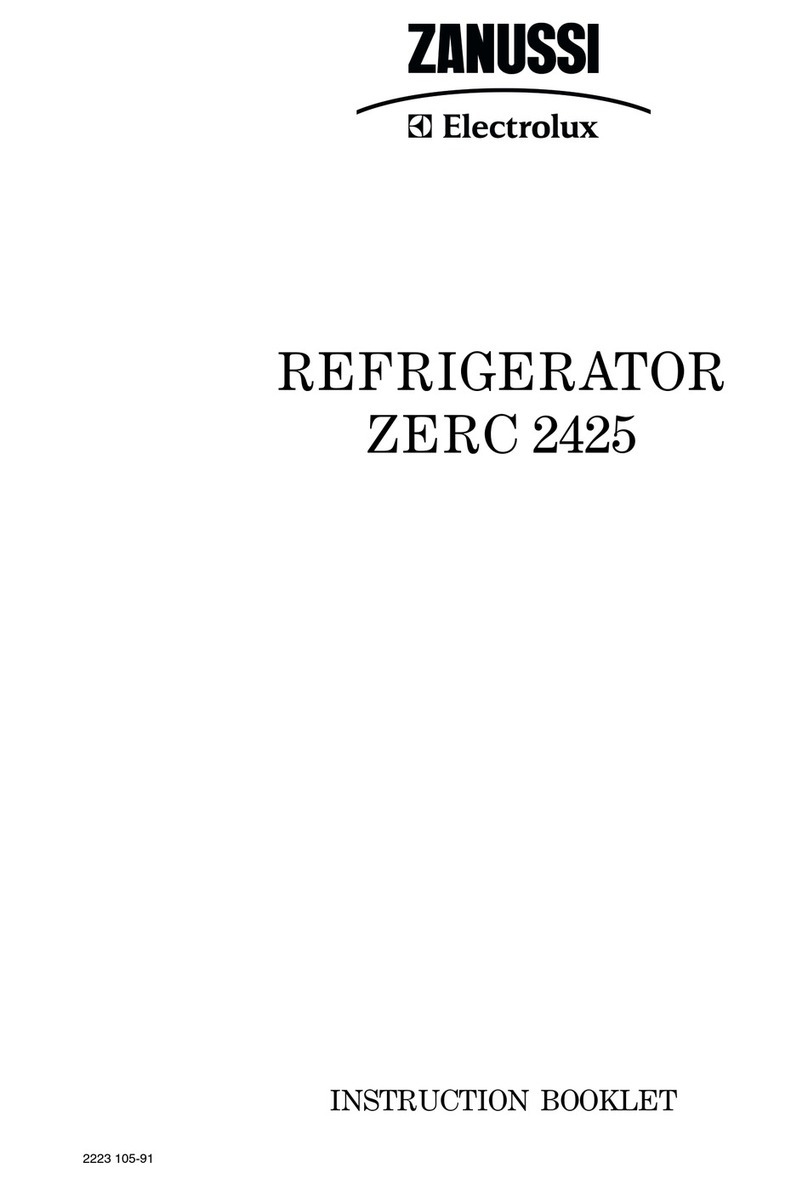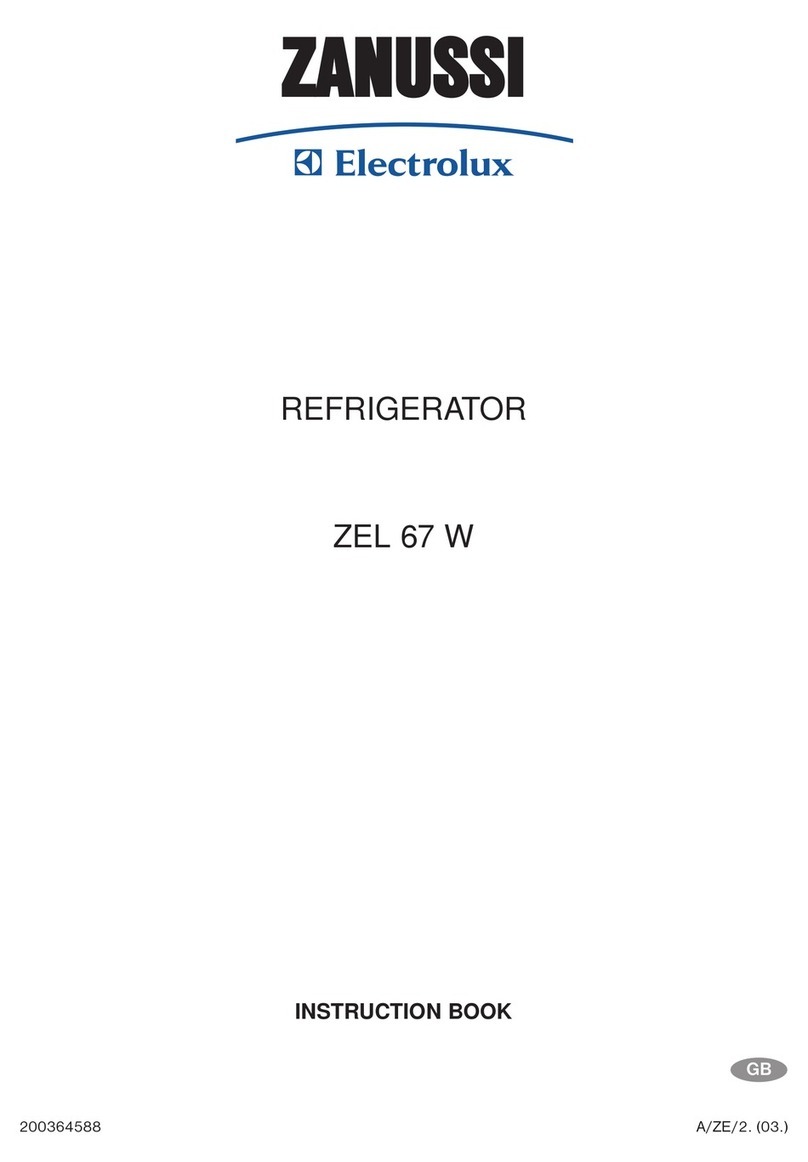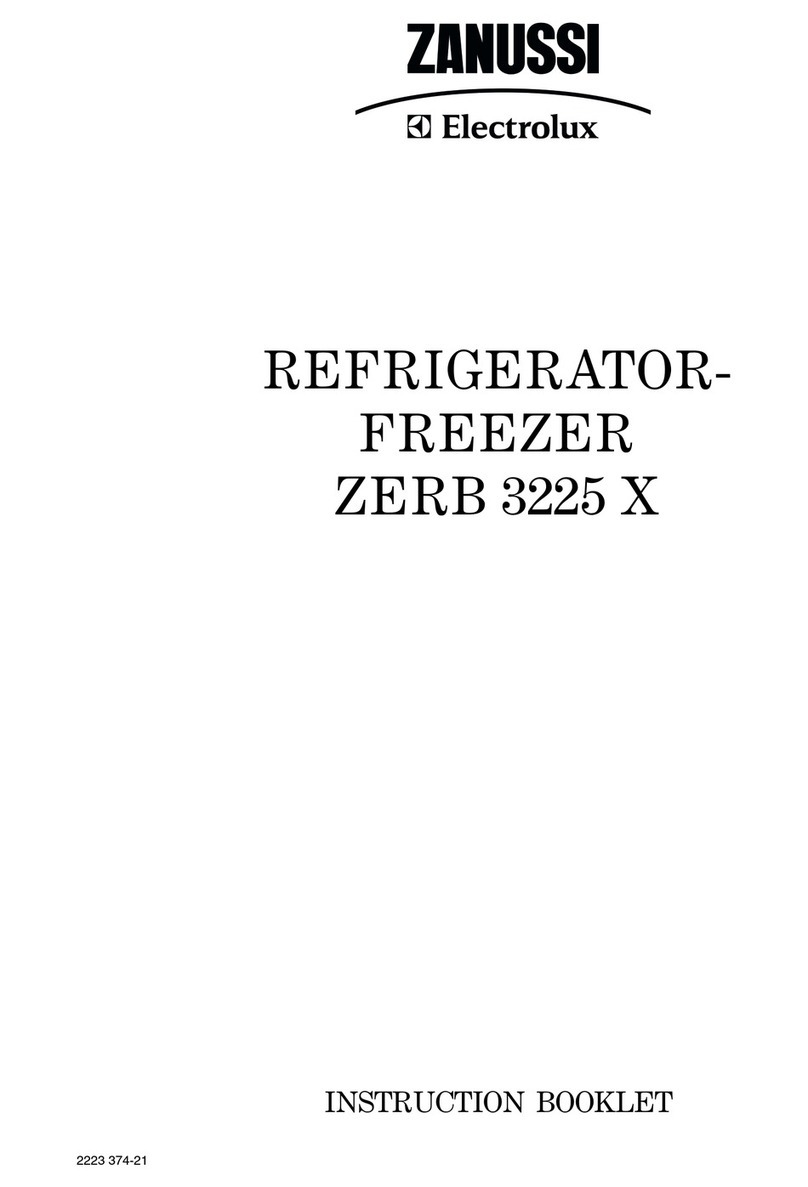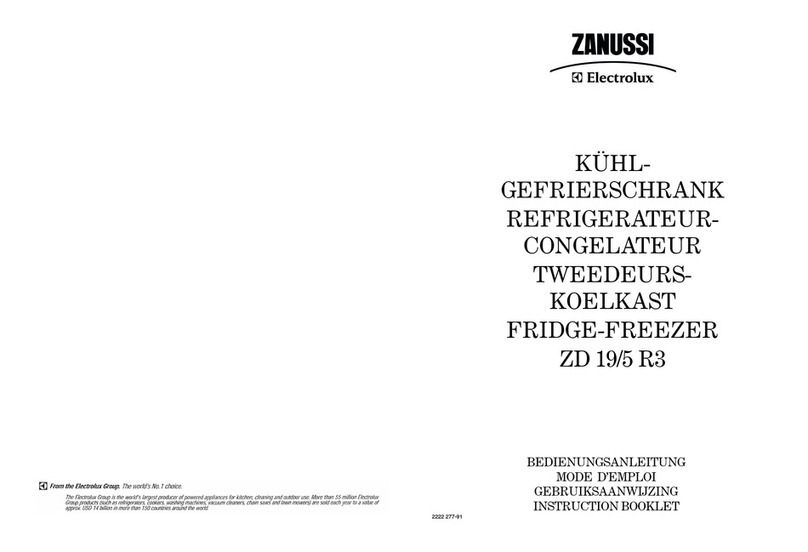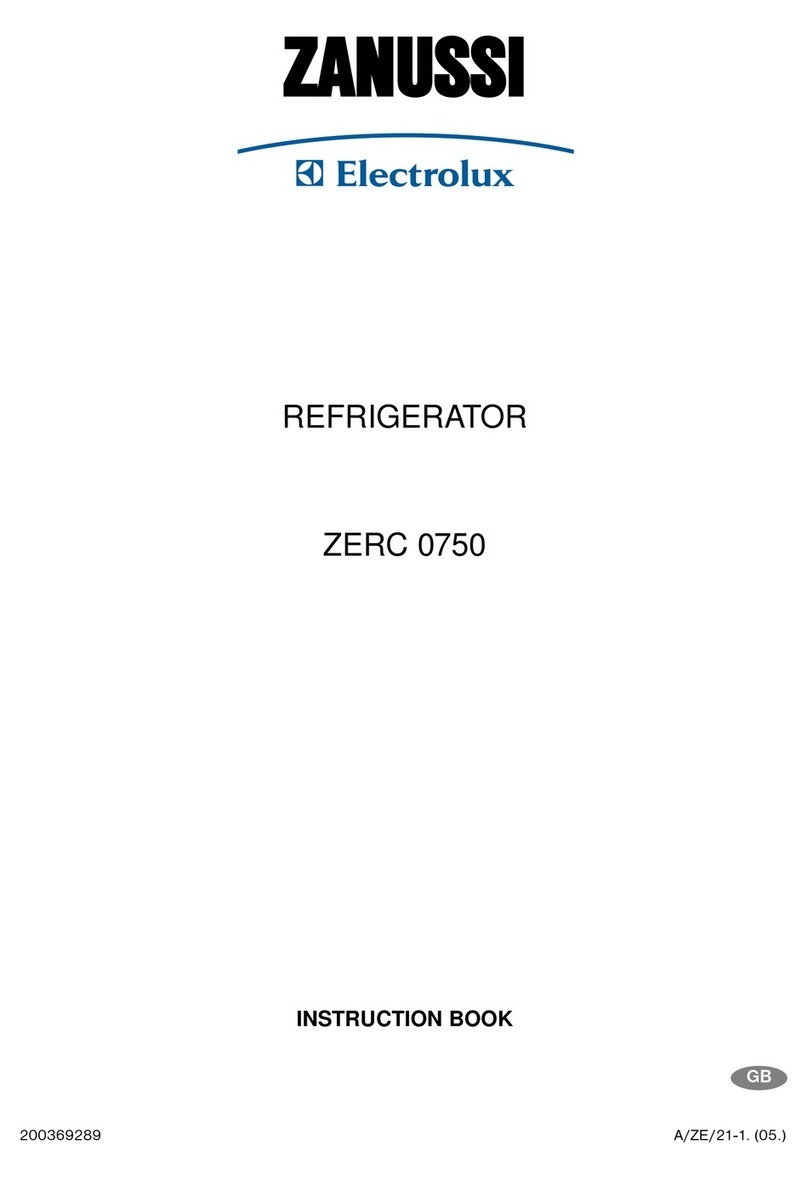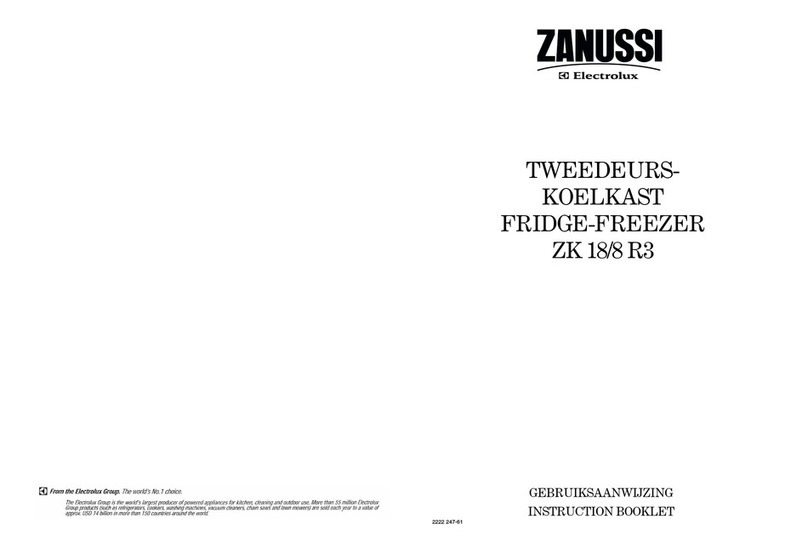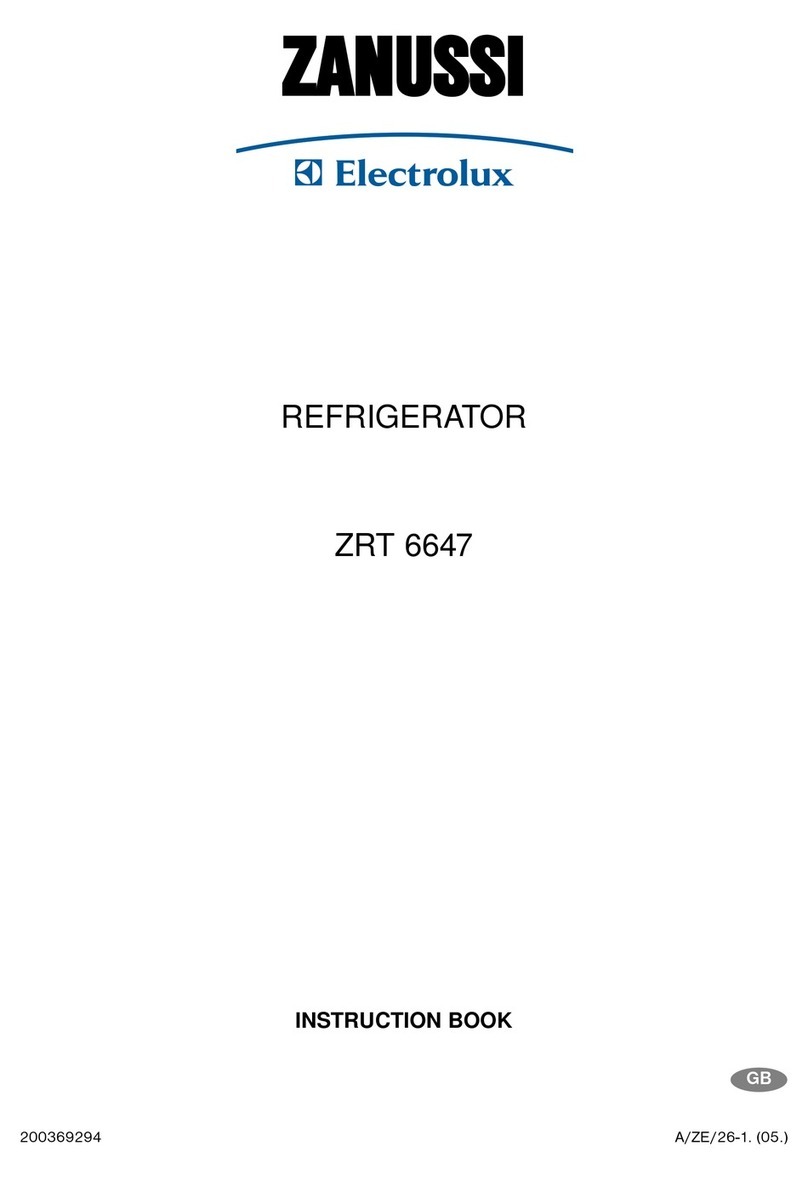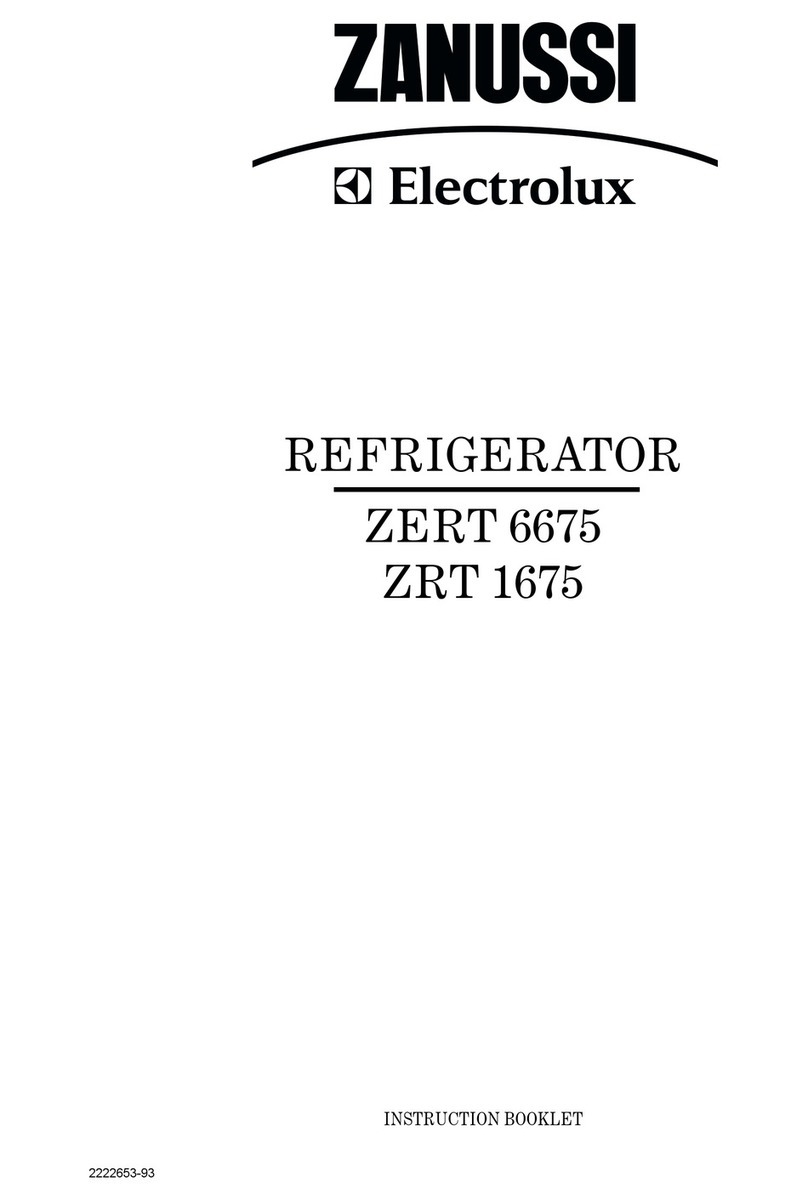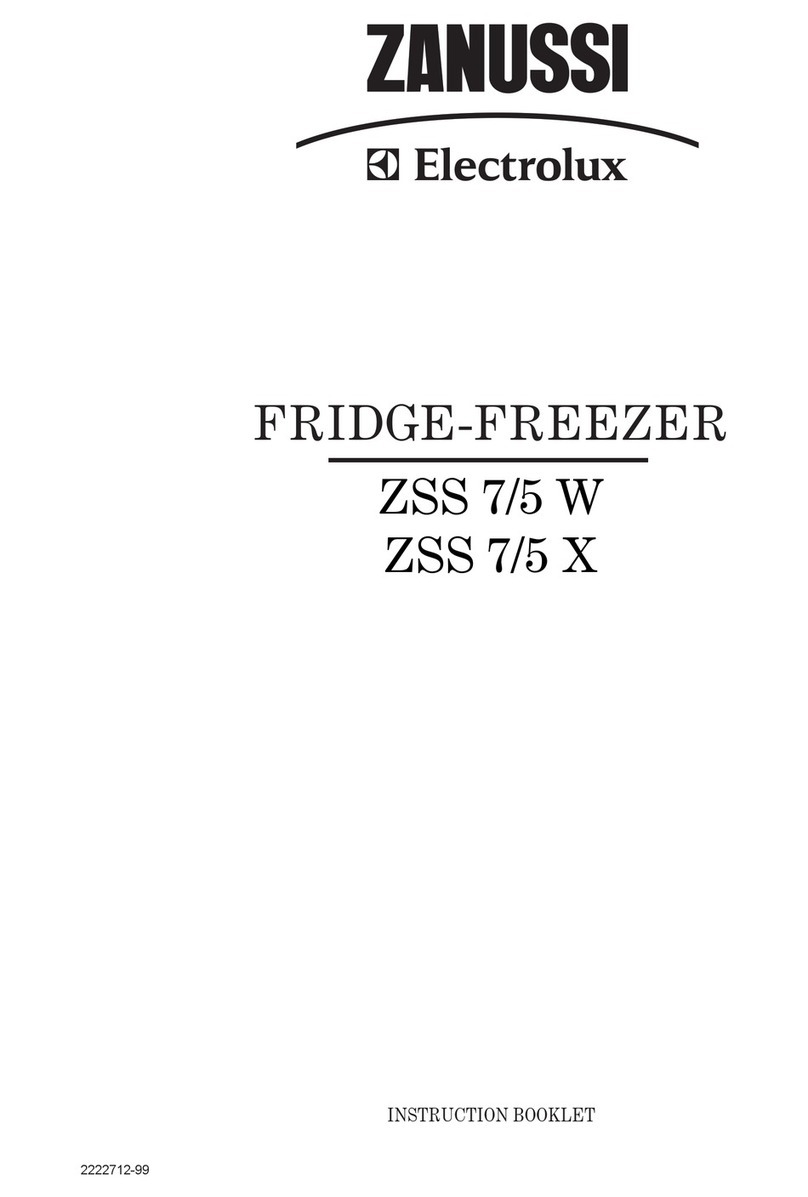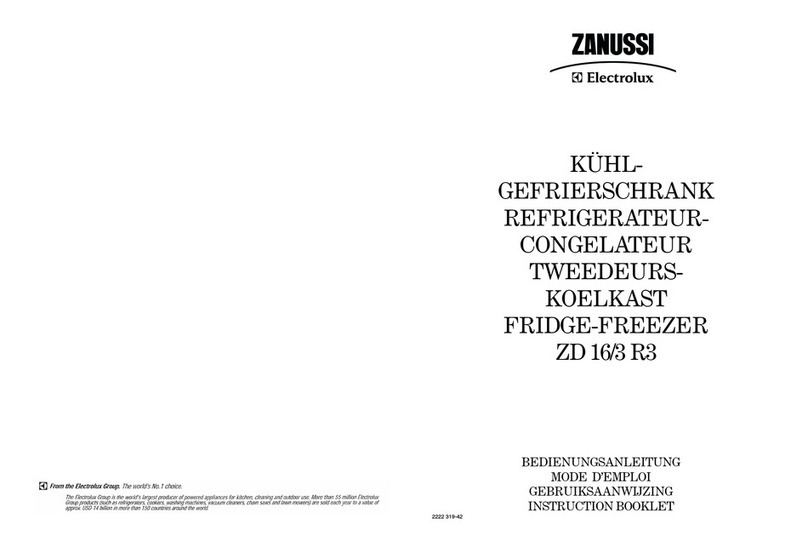8
HINTS AND TIPS
Normal Operating Sounds
• You may hear faint gurgling or bubbling sounds
when the refrigerant is pumped through the coils
or tubing at the rear, and to the cooling
plate/evaporator.
• When the compressor is on, the refrigerant is
being pumped round, and you will hear a whirring
sound or pulsating noise from the compressor.
• A thermostat controls the compressor, and you
will hear a faint ’clic ’ when the thermostat cuts in
and out.
Food Storage
To obtain the best performance from your fridge-
freezer
• Do not store warm food or evaporating liquids.
• Avoid buying frozen food if you cannot store it
straight away. The use of an insulated container is
advisable. When you arrive home place the frozen
food in the freezer immediately.
• Keep the time between buying chilled food and
placing it in your refrigerator as short as possible.
• Do not push food together too much, try to allow
air to circulate around each item.
• Do not store food uncovered.
• Ensure that food placed in the freezer is dated
and labelled and used in date order to ensure
that food is consumed at its best.
• Remove suspect food from your refrigerator and
clean, refer to Maintenance and Cleaning.
• Lean food eeps better and longer than fatty food,
salt reduces the storage time.
• Wrap the food in polythene or aluminium freezing
bags or foil so that they adhere to the food and
provide an airtight seal .
• Pac aging which is swollen or has traces of
refrozen water droplets on the pac could indicate
that the product has not been ept at a suitable
temperature and that it may have lost its original
quality. Partially thawed food must not be
refrozen, it must be consumed within 24 hours.
Never exceed the storage times indicated by the
manufacturer.
Energy Saving Advice
• Do not install the appliance close to sources of
heat, such as a boiler or radiator.
• Locate the appliance in a cool well ventilated
room and ma e sure that the air openings of the
appliance are not obstructed.
• Avoid unnecessary frosting in the cabinet by
pac ing all foodstuffs into airtight pac ages
before placing them in the freezer.
• Always leave warm food to cool down to room
temperature before placing in the fridge.
• Food which is to be frozen (when cool) should be
placed in the fridge before being transferred to
the freezer.
• Thaw frozen food in the fridge. This will ensure
safer defrosting of foods and reduce the wor of
the refrigeration unit.
• Try to avoid eeping the door open for long
periods or opening the door too frequently as
warm air will enter the cabinet and cause the
compressor to switch on unnecessarily often.
• Ensure there are no obstructions preventing the
door from closing properly.
In the Event o a Power Failure
If there is a power failure during the storage of frozen
foods, eep the door closed. If the temperature within
your freezer should rise, do not refreeze the food
without chec ing its condition. The following
guidelines should assist you:
Ice-cream: Once thawed should be discarded.
Fruits & Vegetables: If soft should be coo ed and
used up.
Breads & Cakes: Can be refrozen without danger.
Shell ish: Should be refrigerated and used up
quic ly.
Cooked Dishes: i. e. casseroles should be
refrigerated and used up.
Large Pieces o Meat: Can be refrozen providing
there are still ice crystals remaining within them.
Small Joints: Should be coo ed and can then be
refrozen as coo ed dishes.
Chicken: Should also be coo ed and refrozen as a
fresh dish.
13
GUARANTEE CONDITIONS
Standard guarantee conditions
We, Zanussi-Electrolux, underta e that if within 12 months of the date of the purchase this
ZANUSSI-ELECTROLUX appliance or any part thereof is proved to be defective by reason only of faulty
wor manship or materials, we will, at our option repair or replace the same FREE OF CHARGE for labour,
materials or carriage on condition that:
• The appliance has been correctly installed and used only on the electricity supply stated on the rating plate.
• The appliance has been used for normal domestic purposes only, and in accordance with the manufacturer’s
instructions.
• The appliance has not been serviced, maintained, repaired, ta en apart or tampered with by any person not
authorised by us.
• All service wor under this guarantee must be underta en by a Service Force Centre. Any appliance or
defective part replaced shall become the Company’s property.
• This guarantee is in addition to your statutory and other legal rights.
Home visits are made between 8.30am and 5.30pm Monday to Friday. Visits may be available outside these
hours in which case a premium will be charged.
Exclusions
This guarantee does not cover:
• Damage or calls resulting from transportation, improper use or neglect, the replacement of any light bulbs or
removable parts of glass or plastic.
• Costs incurred for calls to put right an appliance which is improperly installed or calls to appliances outside
the European Community (EC) or European Free Trade Area.
• Appliances found to be in use within a commercial environment, plus those which are subject to rental
agreements.
• Products of Zanussi-Electrolux manufacture which are not mar eted by Zanussi-Electrolux.
European Guarantee
If you should move to another country within Europe then your guarantee moves with you to your new home
subject to the following qualifications:
• The guarantee starts from the date you first purchased your product.
• The guarantee is for the same period and to the same extent for labour and parts as exists in the new
country of use for this brand or range of products.
• This guarantee relates to you and cannot be transferred to another user.
• Your new home is within the European Community (EC) or European Free Trade Area.
• The product is installed and used in accordance with our instructions and is only used domestically, i.e. a
normal household.
• The product is installed ta ing into account regulations in your new country.
Before you move please contact your nearest Customer Care centre, listed below, to give them details of your
new home. They will then ensure that the local Service Organisation is aware of your move and able to loo
after you and your appliances.
France Senlis +33 (0)3 44 62 29 29
Germany Nürnberg +49 (0)800 234 7378
Italy Pordenone +39 (0)0434 39 4700
Sweden Stoc holm +46 (0)8 672 53 90
UK Slough +44 (0)1753 219 897
Ireland Dublin +353 (0)1 4090751

